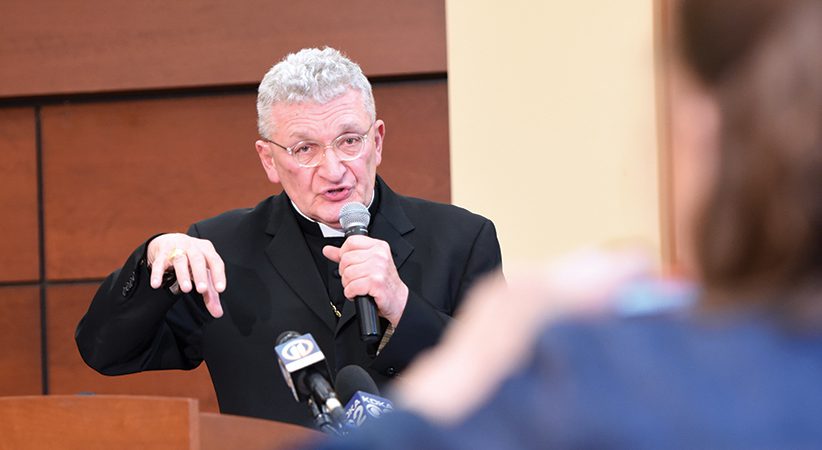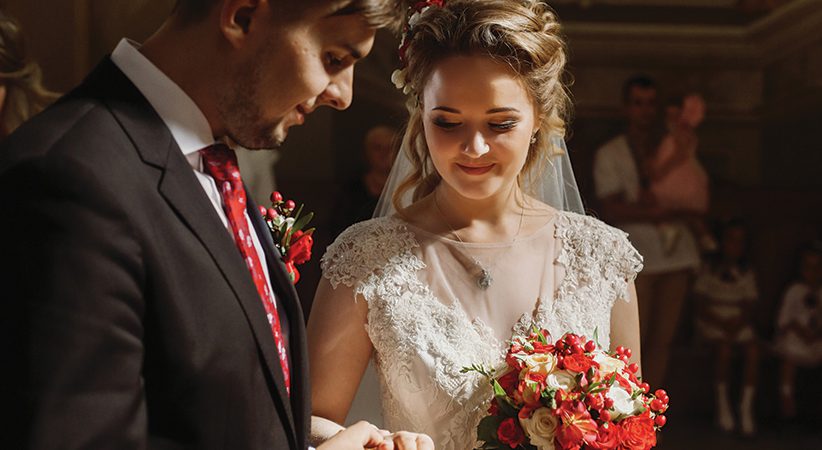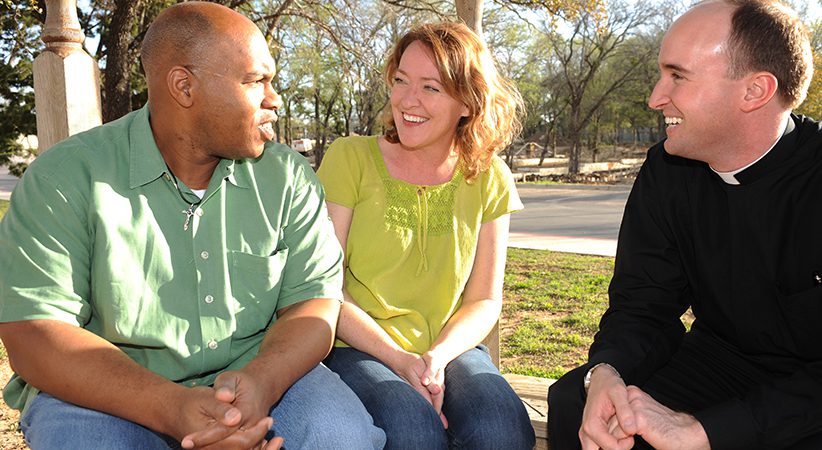A Modest Proposal
How good liturgy should be the ultimate sign of parish viability
Father Alexander Masluk Comments Off on A Modest Proposal
“The liturgy is the summit toward which the activity of the Church is directed … the fount from which all her power flows.” — Sacrosanctum Concilium (Constitution on the Sacred Liturgy, Second Vatican Council, No. 10)
Before retirement, I spent 42 years in active ministry, all of which were spent in parish work, and for 22 years I was blessed to be a pastor. Taught well by the late Msgr. John Miller — my liturgy teacher, mentor, friend and, eventually, my associate pastor — I have always kept the above paragraph as a sort of mantra, a prism through which every decision regarding the parish was made. If funds were required to furnish what was necessary for the proper celebration of liturgy, they were spent. If time was required for the proper instruction of sacred ministers, it was given. When my last parish’s church needed to be renovated to provide a more dignified place for worship, the people generously responded.
I have also had the occasion to visit other parishes, both in my own archdiocese and around the country as well as in a few other countries. What has always been apparent to me is that you can get some sense of the vibrancy of a given parish by looking at the care given to the “house of the Church” and to the celebration of the Divine Mysteries.
When a church and its property are well cared for, life manifests itself in flowers, a well-maintained lawn, seasonal decorations and buildings that are worthy of the sacred events which occur inside them. Such parish campuses speak not just of the efforts of maintenance staff or the managing skills of the pastor, but the genuine love and pride of the people, who not only approve of the look of the parish but often are involved in its care.
When you see a church building that looks neglected, you will often find that the people who are the Church are neglected as well. Not that a shiny bright church building guarantees a vibrant parish; I’ve met pastors who were great plant managers but not as efficient as shepherds.
But now, let’s go inside the building. Let’s consider the reason for the building: the celebration of the mysteries, the sacred liturgy.
Contrasting Parishes
“St. Nellie the Nervous” parish has no music, even on Sunday. The pastor prides himself in a 20-minute Mass. Lectors? “We don’t need no stinking lectors.” No need for altar servers, because the cruets and everything else is already on the altar. The priest’s homilies, if we can call them such, are about a minute of thoughts developed while shaving, or ranting about the people who are not there. Gee, I wonder why they stay away? Or maybe he bemoans the financial ills of the parish. Extraordinary ministers are badly trained, if trained at all, and only allowed because they “speed up” the distribution of the Eucharist. The church is too cold in the winter, too hot in the summer and seldom has flowers near the altar … unless the pastor got lucky and someone died that week! Few families attend, leaving just some older folks … many of them will soon be the reason for new flowers on the altar.
The neighboring parish, “St. Harry the Hospitable,” is in a much different situation. The pastor and musical director are in touch weekly, and all liturgical music, from many genres, is done as an act of praise. The schedule presents a proper balance between Masses with music and Masses without, but all Masses include full participation by the faithful. Children eagerly volunteer to serve at the altar. Ushers greet the congregation and fulfill their duties with warm precision. Lectors and special ministers are well trained, well scheduled, competent and extremely reverent. The homilies are well thought out, relatable and timely, truly breaking open the Word for the people. The sanctuary, and indeed the whole church building, shows the care and attention that is the result of many hands sharing the work of maintaining the proper atmosphere for worship. All sacred rites and sacraments are celebrated with the same careful planning and attention to reverent detail. Families flock to this parish and feel welcomed, and Sunday Mass is not a burden, but a joyful celebration.
So, where do you think the People of God are fed?
Numbers Drive the Process
In our time, we have been through the gut-wrenching processes, which lead to consolidating and/or closing parishes. My experience, and that of other priests I know in other dioceses, is that numbers drive the process, whether it’s attendance, population or finances.
Now, read the quote from Sacrosanctum Concilium again. Go ahead, I’ll wait.
It seems to me that the ultimate criterion for the viability of a parish should be whether or not that parish treats the liturgy as if it really is the “source and summit” of parish life. A committee could learn more about the core values and viability as a worshipping community of a given parish by attending weekend Masses than by reading tons of reports prepared by so-called experts.
Now, I do not disagree that the numbers have something to do with viability (we are body-soul creatures, so the material must be considered, as well as the spiritual), but I wonder how much easier the dreaded decisions would become if we, as a Church, embraced and lived the council’s vision instead of that of the bean counters. But, what do I know? I’m not a big shot with a fancy title, just a simple priest with a modest proposal.
FATHER ALEXANDER MASLUK is pastor emeritus in residence at Immaculate Conception rectory in Jenkintown, Pennsylvania. He evangelizes through his Father Al’s Fragments Facebook page and his writing. He is the author of two children’s books, “Izzy the Christmas Owl” and “Izzy and the Lost Boy.”
…………………………………………………………………………………………………………………………………………………..
‘Liturgy Is the Summit’
“The liturgy is the summit toward which the activity of the Church is directed; at the same time it is the font from which all her power flows. For the aim and object of apostolic works is that all who are made sons of God by faith and baptism should come together to praise God in the midst of his Church, to take part in the sacrifice, and to eat the Lord’s supper.
“The liturgy in its turn moves the faithful, filled with ‘the paschal sacraments,’ to be ‘one in holiness’; it prays that ‘they may hold fast in their lives to what they have grasped by their faith’; the renewal in the Eucharist of the covenant between the Lord and man draws the faithful into the compelling love of Christ and sets them on fire. From the liturgy, therefore, and especially from the Eucharist, as from a font, grace is poured forth upon us; and the sanctification of men in Christ and the glorification of God, to which all other activities of the Church are directed as toward their end, is achieved in the most efficacious possible way” (Sacrosanctum Concilium, No. 10).
…………………………………………………………………………………………………………………………………………………….





